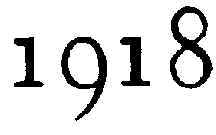
Worlds Apart
Outcome Wasn’t The Only Difference With 1918 Red Sox
By Zach Rocha
Standard-Times correspondent
October 26, 2004
Eighty-six years ago was a much different time for baseball in Boston.
Baseball anywhere actually.
While today most teams worry about losing their top players to free agency, back then the Evil Empire wasn’t a team in pinstripes from New York.
Instead the enemy was led by a Kaiser from Germany named Wilhelm. And he wasn’t into sports, but warfare.
In the middle of 1917, the United States of America declared it would engage in World War I, with its prime objective thwarting the powers in Western Europe.
That meant a lot to the national pastime, which would be heavily affected the following season.
“Boston was fortunate not to lose anybody (to the War), really,” explained Allan Wood, the author of ‘Babe Ruth and the 1918 Red Sox.’ “The White Sox, for instance, lost almost their entire starting nine, and that ended their chances of repeating as the American League champs.”
While other teams watched as their players turned in their bats and gloves for guns and armor, the Sox hit the market with a flurry, picking up four key players who would contribute right away.
“The team made a couple of really big trades with the Philadelphia A’s,” Wood said. “They picked up pitcher ‘Bullet Joe’ Bush, catcher Wally Schang, centerfielder Amos Strunk and first baseman Stuffy McInnis. The New York Times actually accused Boston of trying to buy the pennant.”
Ironic.
Bush became the team’s No. 3 starter, going 15-15 with a 2.11 earned-run average.
This was, of course, the dead-ball era, and the ERA was very good but not eye-popping. The Sox’ staff posted a 2.31 mark that year. And pitchers didn’t just pitch and then take four or five days off. They also played the field.
Bush hit .276 with 14 RBI in 36 games away from the mound.
Ahead of Bush in the four-man pitching rotation were Carl Mays and Ruth. The No. 4 starter was Sam Jones, who coincidentally had a Hall of Fame career for the Boston Celtics later on (joke — that’s actually not the same guy).
Anyway, the Fenway faithful had much to cheer about that season as the Sox spent no more than three days out of first place in the American League all season.
Although the Fenway faithful was not nearly as large as it is now. The “Great War” almost caused the cancellation of the World Series. As it was, the regular season was just 126 games, as opposed to its usual 154-game schedule.
“The average attendance during the regular season was like 7,000 at Fenway. The games were all played in the afternoon,” said Wood. “In July and August, the other Major League teams had only about 100, 200 fans per game.”
But the small crowds didn’t affect the way the Sox played. Instead, it had a lot to do with a 23-year-old who was on the brink of becoming the greatest stickball player ever.
On the Fourth of July, Boston was one game back of first place.
“After that, they started having Ruth play left field or first base when he wasn’t pitching,” Wood said.
It was then that the “Sultan of Swat” was born. It took only 16 days for the Sox to stand six games up.
Their lead on the league wavered between 6.5 and 2 games the rest of the regular season.
Ruth finished with a batting average of .300, to go along with 11 home runs and 66 RBI in 95 games in the field.
“He led the major leagues with a .555 slugging percentage, tied for the American League lead with 11 home runs, tied for second in doubles, and tied for third in runs batted in — all while having 75 to 150 less plate appearances than his opponents,” Wood said.
With his feet on the rubber, Ruth went 13-7 with a 2.22 ERA.
In Game 1 of the World Series, Ruth was on the hill, pitching against the National League champion Chicago Cubs.
While he was 0-for-3 at the plate that day, the southpaw threw a gem, tossing a complete-game, six-hit shutout, and the Sox won, 1-0, at Comiskey Park.
That’s right. Even though Wrigley Field was in existence and the Cubs played all of their regular season games there, the Cubbies’ World Series home was that of the White Sox.
The reason doesn’t seem to be known, but Comiskey did average 18,000 fans for its Series games. Fenway drew 20,000.
“Ticket prices were lowered for the Series,” Wood explained. “Box seats were $3.”
Game 2 saw Chicago even the best-of-seven with a 3-1 victory, powered by pitcher Lefty Tyler, who not only threw a complete game but drove in two runs.
With the Series still in Illinois, Boston took a 2-1 lead thanks to a two-run fourth inning. Mays, a ground-ball pitcher, threw the complete-game seven-hitter to key the 3-2 victory.
Ruth again took to the hill for Game 4 at Fenway, but this time he struggled with his control. However, he knocked in two runs with the bat and Boston took a commanding 3-1 Series lead following the 3-2 win.
The Cubs didn’t die quietly, though, as Jim Vaughn kept the Series going with a complete-game, five-hit shutout, and Chicago won, 3-0.
In Game 6, Mays closed out what would be the final World Series championship of the 20th century for the Sox. Boston won 2-1 after a two-run third inning, while Mays tossed a complete-game three-hitter.
This story appeared on Page C1
of The Standard-Times on October 26, 2004
� 1997-20243 by Allan Wood.